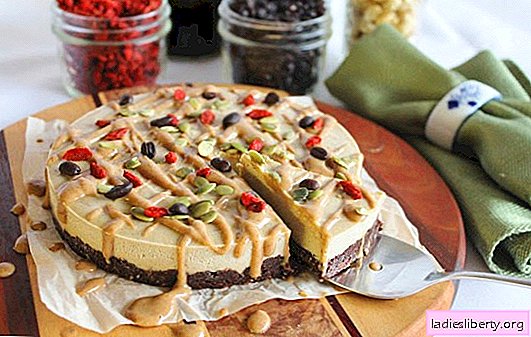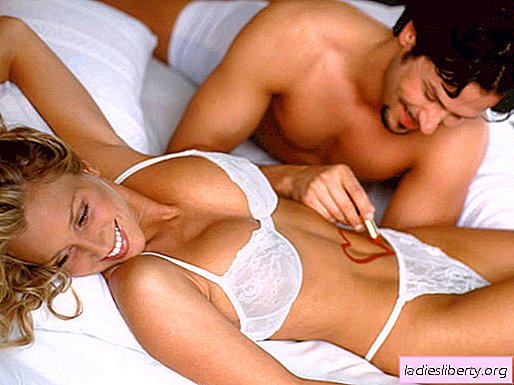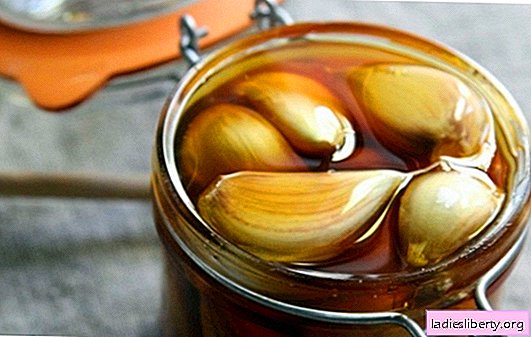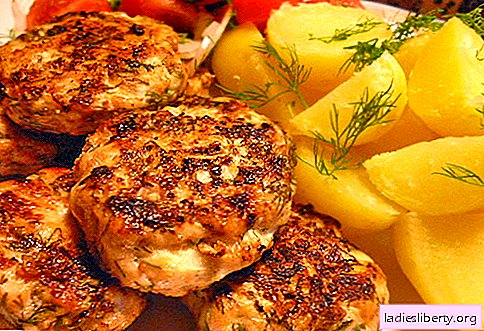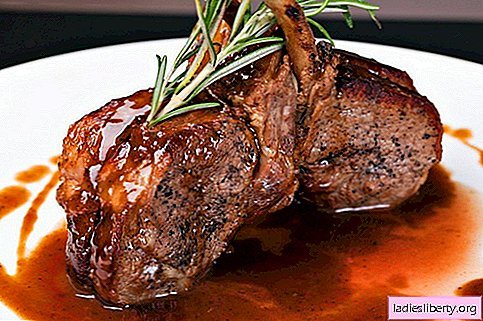
Acne of newborns (neonatal cephalitic pustulosis) looks like small white or yellow pimples on the face and neck of a baby and can be found on the skin immediately after the baby is born, even when in the hospital.
In many cases, acne appears 2-3 weeks after birth. Rashes can be single and multiple, covering the entire face of the child. It is observed in about 30% of children.
These pimples are physiological in nature and do not require special treatment: after a few weeks they pass spontaneously.
Causes of Acne in Newborns
One of the main causes of acne in newborns is the hormonal background of the baby.
Hormonal crisis
This is explained by the imperfection of the endocrine system and the high content at the time of birth in the body of the child, in addition to the produced own, sex hormones of the mother. This is the so-called hormonal crisis of the newborn, which develops from 3 to 7 days of the child's life. In such cases, in addition to skin rashes, the newborn may experience symptoms of puberty:
• physiological mastopathy;
• edema of the external genitalia;
• dropsy of the testicle in boys;
• metrorrhagia in girls.
This is due to the large amount of estradiol entering the baby’s body at the end of its intrauterine development, if a woman developed a high level of estrogen during pregnancy. They are necessary for the infant to form subcutaneous fat, and contribute to the appearance of acne. In such cases, if necessary, hormone therapy is performed to level the hormonal background of the child.
Other reasons
In addition, with acne in newborns, the causes are:
• genetic factor (in the presence of various forms of acne in the mother’s past, a hereditary predisposition plays a role);
• underdevelopment of the sebaceous glands - they can not cope with the overabundance of large amounts of thick fat formed under the influence of hormones, their blockage occurs;
• increased reproduction of lipophilic yeast, which lead to the development of the inflammatory process.
Acne in the newborn - what to do
With the development of acne in newborns, what to do - the pediatrician will answer, examining the child. As a rule, this rash does not need treatment, since it is a temporary phenomenon associated with hormonal changes in the child's body. The rash on the skin of the child is not contagious, is not transmitted to others in any way.
With the normalization of the endocrine and reproductive system, the function of the sebaceous glands will also be restored. The rash will gradually disappear on its own, without additional treatment. This period takes approximately 2 to 6 months. With the right regime created for the child, the terms are reduced to several weeks. It is important all the time from the moment of birth to observe a number of rules for caring for the skin of the baby. It is necessary to adhere to several basic principles:
• hygiene procedures (washing, bathing) should be regular, for their use only use products intended for children;
• air and sun baths - avoid direct sunlight, as well as - dust, wind, cold.
What not to do with acne in newborns
Contraindicated in acne:
• Applying creams, lotions, oil, including baby cream, to skin patches with rashes - it is oily and can aggravate the course of acne: under an oily film, an inflammatory process may develop due to clogging of the ducts of the sebaceous glands. Powder or creams and ointments with antibiotics are also not recommended. The skin should be dry and clean. If there are too many rashes, you can use Sudocrem, Bepanten, Eplan or zinc ointment (after consulting a pediatrician) - they dry the inflammatory elements well. They need to be applied pointwise, in a small amount, twice a day. Zinc ointment is applied every three days. It is acceptable to use cosmetics labeled: "From the first days of life."
• Extrusion of rash elements - infection and inflammation may occur. In the future, ugly scars may appear at the site of the inflammatory process, which is difficult to get rid of.
• Lubrication with antiseptics (brilliant green, chlorophyllipt and others).
• Excitement of the mother who is breastfeeding - this stimulates the production of the hormone cortisol. It contributes to an increase in skin problems in the child.
Treatment for Acne Complications
If a complication has occurred, and a purulent process has developed in the presence of acne in newborns - what to do is determined by the pediatrician. He will prescribe a comprehensive treatment, since without adequate therapy, the normalization of the skin condition will take a long time. Self-medication is not recommended in this case. Therapy for the onset of complication includes:
• antibacterial drugs;
• vitamin therapy;
• antihistamines;
• immunostimulants;
• local treatment (treatment with antiseptics).
A neonatologist or pediatrician selects the dosage of drugs according to the age and weight of the child, prescribes the frequency and duration of their intake. In rare cases, when the rash does not heal for a long time, laser therapy is prescribed.
Such treatment must be prescribed to weakened premature babies, in the absence of good care and nutrition, as well. if mom tried to squeeze out the elements of the rash. There is a risk of infection, the development of a septic state against a background of low immunity.
Folk remedies
Speaking about the alternative treatment of acne in newborns, you need to remember that any, even the most harmless methods, must be agreed with the doctor. In this case, you can apply folk recipes to a nursing mother, but not to a child. Any treatment of the newborn with herbs is carried out only through the mother - the child may develop an unpredictable reaction to plant components.
Bathing
Even bathing a newborn is recommended in clean boiled water, so as not to irritate the skin and not cause an allergic reaction. Today, pediatricians are not advised to make healthy children a bath with decoctions of herbs for the same reason. But it is allowed to wipe the skin on the affected areas: this eliminates the inhalation of herbal vapors, reduces the risk of allergies, has a beneficial effect on the delicate skin of the face. The most effective and safest herbs are the string and calendula. You need to start treatment using one of them. If no irritation or allergy ensues, add a second. The procedure is carried out 2-3 times a day. Gently wipe the rash, do not rub, do not press on the skin.
If rashes appear on the body, it is permissible to use a weak solution of manganese. To do this, 1 g of powder is diluted in 1 liter of water and add this solution to bathing water. You should get a slightly pink hue. Bathe gently, avoiding water getting into the eyes and mucous membranes of the child.
Vitamin therapy
Given that the skin needs vitamins, especially A and E, which contribute to the active healing and restoration of the epidermis, the body of the mother and child should not be deficient in them. But fat-soluble vitamins, which are A and E, are dangerous for their overdose, have many serious side effects. Therefore, the normal daily doses of their newborn should be received from the mother through the milk, on condition of breastfeeding.
Juices
It is recommended to introduce fruit juices into the diet of a nursing woman. Effective juice, consisting of an equal amount of freshly squeezed apple, carrot and pumpkin. It is drunk once, in the morning hours, in an amount of 40 g. The child's body can react to juice as an allergen, therefore, when starting such vitamin therapy, you need to dilute the first few servings in half with water.
Aloe
Aloe contains a large number of biologically active substances, antiseptic substances, vitamins, trace elements, immune complexes. Due to the possible irritating effect on the skin of a newborn, it is not recommended to use aloe in any form in a child. But mom can take 10 g of fresh juice, adding a few grams of lemon to it, once a day.
There are some features for making juice. For this purpose, the lower leaves of a three-year-old and older plant are suitable. It is believed that healing properties appear in aloe after 3 years. Their therapeutic effect persists for 4 hours. Therefore, it is recommended to use them immediately after separation from the plant. The leaves are well washed, peeled. Then, the outer layer is carefully cut off from them and used to make juice.
But many experts consider it necessary to use the plant after storage in the refrigerator for 2 weeks. After that, they are crushed and squeezed through cheesecloth to obtain juice.
Some sources, citing studies by American scientists, indicate the presence of carcinogenic substances in aloin (the juice of the plant located between the skin and the leaf gel). Therefore, to prepare fresh juice, you need to clean the sheet of skin and use one gel.
Herbs
Herbal treatment is similar. It is allowed to take tea (or broth) from chamomile twice a day. It is steamed in water and drunk in a warm form. You can add a small amount of sugar and lemon juice. Honey is contraindicated - it contains many allergens.
The string and viburnum cleanse the skin due to the high content of flavonoids in them. Tea is prepared from 60 g of a mixture of herbs per 1 liter of boiling water. It is drunk three times a day in 100 ml.
Acne in newborns is a physiological condition of the skin, which does not require intervention and with good care of the child passes independently. In the absence of complications, there is no need for treatment. In addition to thorough care for the baby, you need proper nutrition of the mother and the attention of the father - the skin will be completely healthy after two weeks.

